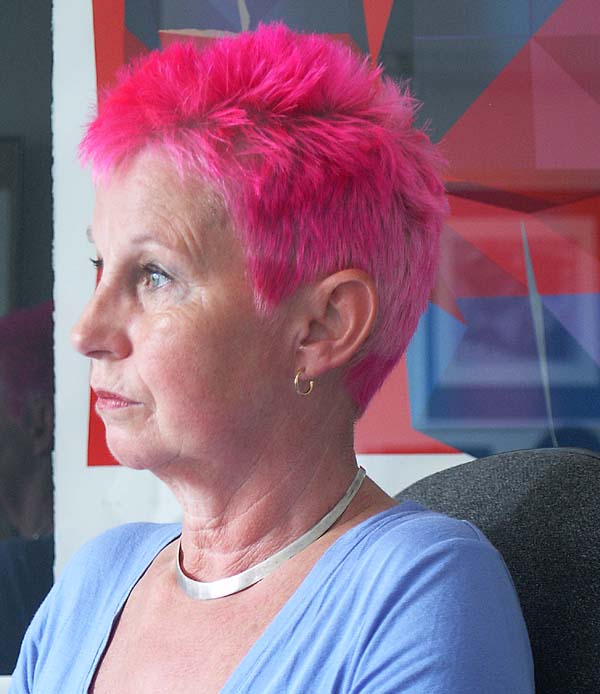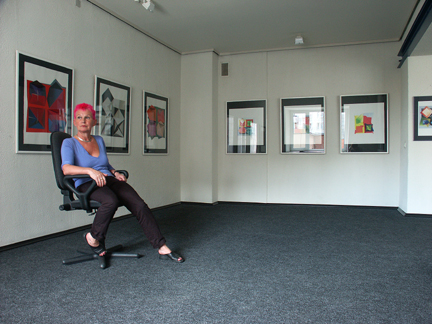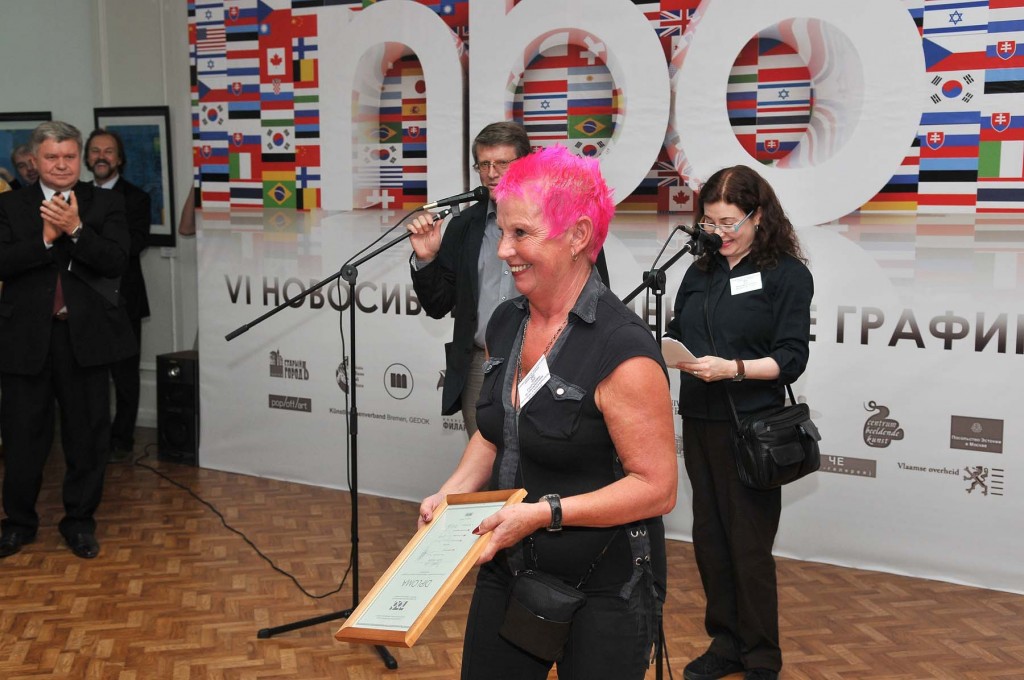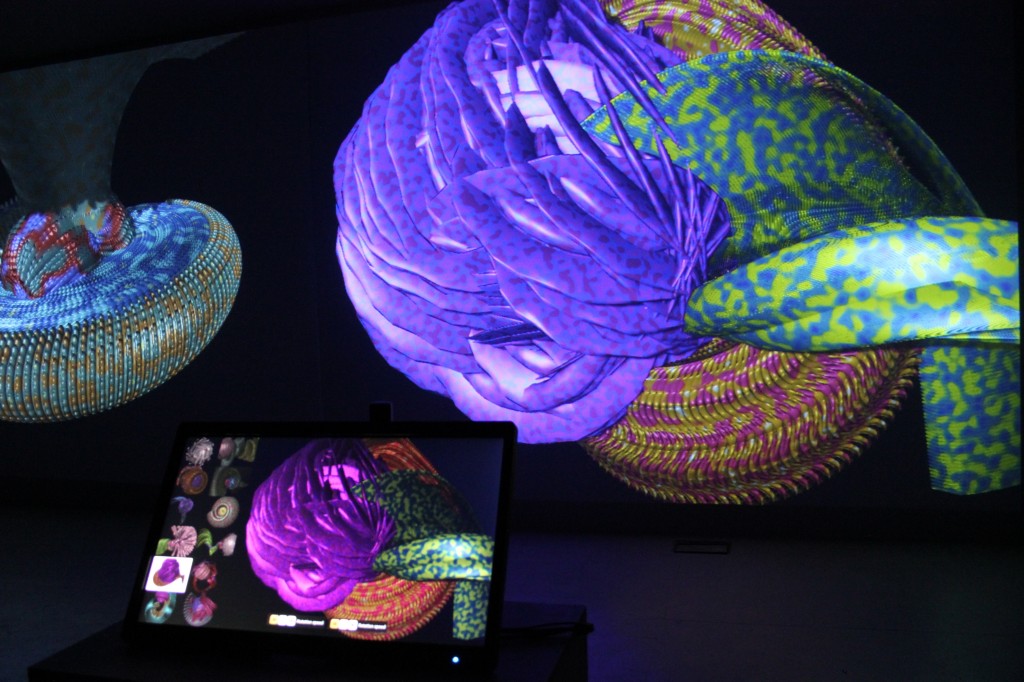By Eva Kekou, 4Humanities International Correspondent
Sue Gollifer has been a professional artist, printmaker, and lecturer for more than thirty years. She has exhibited her work worldwide and her work has been collected by major international public institutions.
The interview that follows gives us more information about her work and activities.
Eva Kekou: Hello Sue! You are a very active person, being an artist, teacher, researcher curator, and organizer while also being involved with so many boards and working as the Director of the International Symposium of Electronic Art (ISEA). Do these activities overlap with your artstic identity? How does your experience as an artist link to the curatorial, research and teaching activities?
Sue Gollifer: Yes they do, because as an academic I teach and mentor students about their professional development, which includes exhibiting and marketing their work. This has also developed into the evidence of my own personal research which I did in the mid 90’s about printmaking and the use of new technology that lead to me curating the exhibition ArCade (an international electronic printmaking exhibition) showing evidence of this research as to how printmakers could use computers to enhance their printmaking skills and development. As to being on boards and trustees, I think it is important and vital to have women on such Boards, and I hope my long experience as an artist, curator, researcher and academic is relevant to the enhancement and knowledge needed for these not for profit art organisations.
EK: Reading about your work, I came across the title of your thesis: ‘The impact of new technology within the practice and pedagogy of Fine Art’. You are a very experienced teacher – how would you now define the impact of new technology in the fine arts according to your years of experience in academia?
SG: Well, I was an earlier pioneer of this area of research as you have rightly identified. For some years in the late 90’s and early 00’s I ran a Centre funded by the Higher Education Committee called CTIAD, Computer Teaching Initiative in Art & Design, that gave advise to academics anywhere in the UK as to how they could use new technology to enhance their teaching and learning and their specialist areas in art & design. Seems so strange now but things have moved on so rapidly that we can’t imagine technology not impacting on our teaching or our artistic practice.
EK: Can you tell us about the aims and objectives of ISEA? How do they differentiate from country to country? How important are international conferences of this type and what do you think made ISEA successful? Are you considering any changes or thinking that things should be amended in the future?
SG: ISEA International and the various annual symposiums are unique in their character because although there are strict guidelines re: running a symposium, it is very much a nomadic experience. Each country that is accepted (via a very rigorous selection criteria) brings together a very unique cultural experience. They choose a theme that is relevant to their team and work with me as the Director and the Board to work on a call for participation. As you know, ISEA is an international non-profit organisation fostering interdisciplinary academic discourse and exchange among culturally diverse organisations and individuals working with art, science and technology. I, as the Director of the Headquarters and the Foundation Board, work closely with each host to make sure that these aims are adhered to, but we do always look to the future as to how it can be changed and modified due to developments in new technologies and in light of global political and economic situations.
EK: In 2004 your work was selected for the ACM SIGGRAPH Art Gallery in 2004, the first European to be selected for this prestigious role. Can you tell us more about this experience and how international art organizations can benefit the art world by creating global perspectives?
SG: Wow, that is a big question, but I hope in some measure through ISEA and ACM SIGGRAPH I have shifted the perspective of these organisations from being either European- or USA-centric and have made people aware of the rich diverse digital culture that exists in many other parts of the world. I hope I have opened up opportunities for collaboration and exchanges.
EK: Can you give us some information about the Brighton Digital Festival (BDF) from your own experience and views? Also, can you tell us about the show Mutator 1+2: Evolutionary Art by William Latham you curate there?
SG: This is my more current involvement this month as I have put together the William Latham Mutator 1 & 2 exhibitions. I have been aware of his significance in our history of digital art but it is only more recently that I have had the opportunity to meet him, as he now lives in Brighton. I am the co-chair of Phoenix Brighton and as I am on their artistic strategy committee. As we set aside the Gallery to host a digital art Exhibition as part of the BDF, I put forward this proposal of a retrospective of his work. It has received a major Arts Council grant to enable us to put this exhibition together. There are a number of initiatives around the exhibition including talks, workshops and a symposium on Art & Science. Also, my MA Digital Media Arts students have had the opportunity to participate in many of the events and have also had the chance to exhibit their work.
EK: How do you think that the audience in Brighton embraces artistic festivals and how well supported is art in Brighton and the wider area?
SG: This is only the third year of BDF but I think it is gaining momentum. Historically, there have always been a number of digital events at this time and it is only through working across these events through wired Sussex and Lighthouse that there is collaboration to bring such events together.
EK: What are your next steps in 2013?
SG: Well, the Alan Turing Exhibition (Intuition and Integrity) that I curated with Anna D is going to Bletchley Park in November. I am also working with ISEA2014 Dubai and ISEA2015 Vancouver and bids for 2016 Rotterdam and Hong Kong. Also I am working on touring the Mutator 1 & 2. I am also working with a filmmaker and a scientist on an AHRC bid for a research project called ‘Breathless’ and of course running my MA DMA course.



